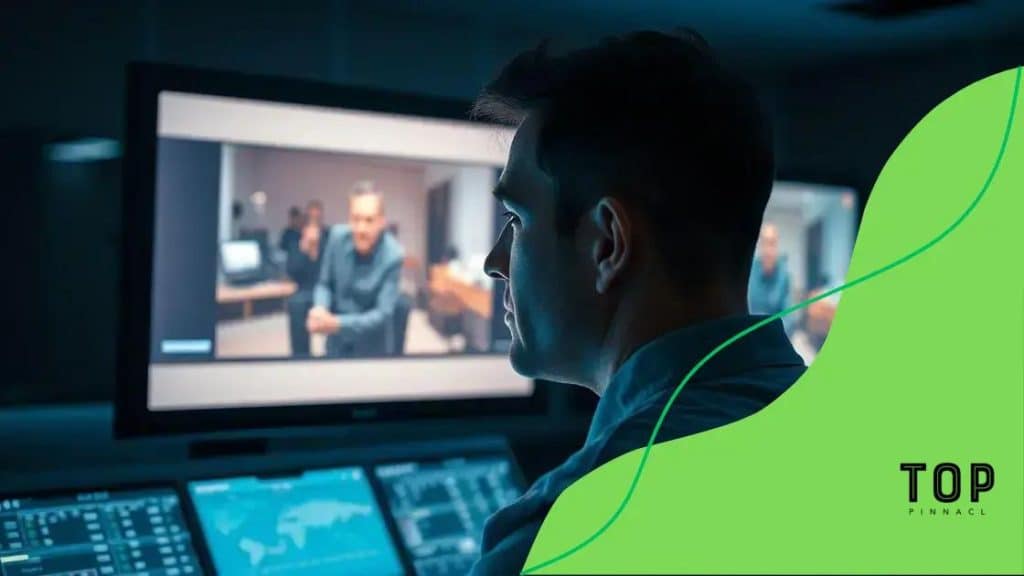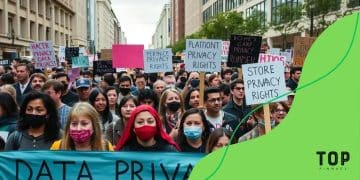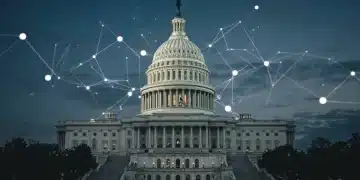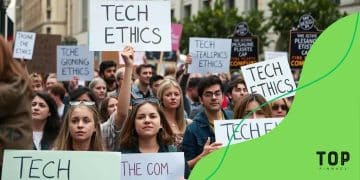Deepfake detection news: Are you prepared for the truth?

Deepfake detection involves advanced technologies using machine learning and digital forensics to identify manipulated media, addressing concerns related to misinformation, legal issues, and the impact on personal privacy.
Deepfake detection news is more important than ever as videos become increasingly manipulated. Have you ever questioned the authenticity of something you saw online? Let’s dive into how this technology works and its implications.
Understanding deepfakes and their impact
Deepfakes have transformed the way we perceive digital media. By using artificial intelligence, these technologies can create hyper-realistic video and audio that seem genuine but are actually manipulated. This raises numerous questions about trust and misinformation in our digital age.
What Are Deepfakes?
Deepfakes utilize algorithms to synthesize images and sounds, making it possible for creators to produce convincing scenarios that never actually happened. This process involves training models on large datasets of real footage, making the results remarkably lifelike.
Impacts of Deepfakes
As this technology advances, its effects on society are profound. Here are some key areas affected by deepfakes:
- Misinformation: The spread of false information can undermine trust in media.
- Privacy Concerns: Individuals can be targeted with damaging content without their consent.
- National Security: Deepfakes may be used to deceive and manipulate public opinion.
Understanding deepfakes is crucial for navigating the complexities of modern media. Professionals in journalism, law, and security fields must stay informed about these trends. With this knowledge, they can better identify manipulated content and educate the public on the risks associated with deepfake technology.
As we become more accustomed to these advancements, recognizing the implications of deepfakes becomes vital. Individuals need to enhance their media literacy, allowing them to discern real content from fake. This awareness fosters a more informed society capable of tackling the challenges posed by this emerging technology.
Technologies used for deepfake detection
As the threat of deepfakes increases, various technologies are emerging to help detect these manipulated media. Identifying deepfakes requires advanced analytical tools that can recognize subtle signs of alteration. Below, we explore some of the key technologies employed in the fight against deepfakes.
Machine Learning Techniques
Machine learning is at the forefront of deepfake detection. By training algorithms on large datasets of real and fake media, these systems learn to identify inconsistencies. They analyze pixels, audio frequencies, and even facial features to distinguish between authentic content and manipulated versions.
Digital Forensics
Digital forensics plays a vital role in detecting deepfakes. Techniques such as examining video metadata and analyzing compression artifacts help determine the authenticity of a file. Forensic experts use these tools to verify if the content has been altered, aiding in the assessment of its credibility.
- Image Analysis: Analysis of pixel behavior and color inconsistency can reveal deepfake manipulations.
- Audio Analysis: Identifying discrepancies in audio signals can expose fake recordings.
- Face Recognition Systems: These systems track specific facial movements to detect unnatural behavior.
Another innovative approach is the use of deep learning models specifically trained to spot deepfakes. These models process vast amounts of data and utilize neural networks to improve detection accuracy continuously. As more people share and consume media online, the demand for effective detection technologies will only grow.
In addition to advanced technologies, collaborative efforts among tech companies, researchers, and policymakers are crucial. By sharing information and developing best practices, we can enhance our ability to recognize and counteract the risks posed by deepfakes. Combining human intelligence with technological advancements creates a powerful defense strategy.
Real-life implications of deepfake technology

The use of deepfake technology has far-reaching implications in the real world, affecting various sectors and individual lives. As this technology becomes increasingly accessible, the potential for misuse grows, leading to serious consequences.
Impact on Personal Privacy
Deepfakes can violate personal privacy in alarming ways. Individuals can find their likenesses used in inappropriate or harmful contexts without their consent. This not only damages reputations but also causes emotional distress.
Societal Trust
A major concern is how deepfakes affect societal trust. With the rise of fake videos and images, people may become skeptical of authentic media. This erosion of trust can complicate communication and create divisions within societies. It becomes hard to discern what is real, leading to confusion and misinformation.
- Political Manipulation: Deepfakes can be used to spread false information during elections, influencing public opinion.
- Misinformation Campaigns: Malicious actors can create false narratives that manipulate viewers and damage reputations.
- Legal Challenges: The use of deepfakes raises complex legal questions about consent, ownership, and accountability.
Many organizations are starting to recognize the threat and are implementing measures to combat the misuse of this technology. Social media platforms, for example, are developing detection tools to identify and flag deepfake content before it spreads.
In the realm of entertainment, deepfakes can offer creative opportunities but also ethical dilemmas. While filmmakers can bring deceased actors back to the screen, questions about consent and the authenticity of performances arise, complicating the narrative of media production.
The role of policy and legislation
Policy and legislation play a crucial role in addressing the challenges posed by deepfake technology. As this technology advances and spreads, lawmakers are tasked with developing frameworks to protect individuals and maintain the integrity of information.
The Need for Clear Regulations
Clear regulations are essential in a world where deepfakes are becoming more common. Laws can serve as guidelines for ethical use and provide recourse for victims of misuse. However, creating effective policies can be challenging due to the fast-paced nature of technology.
Current Legislative Efforts
Many countries are beginning to take action against deepfakes. Some jurisdictions have introduced laws specifically targeting malicious uses of this technology. These laws typically focus on:
- Consent: Ensuring that individuals have control over images and videos of themselves.
- Penalties: Establishing consequences for those who create or distribute harmful deepfakes.
- Accountability: Holding platforms responsible for hosting deepfake content.
These efforts aim to balance innovation with the need for protection. Policymakers must consider how to promote the positive uses of deepfake technology while simultaneously mitigating its potential harms.
In addition, international collaboration is necessary, as deepfake technology knows no borders. Countries can work together to establish best practices and share information about emerging threats. This global approach can enhance collective security and foster responsible use of technology. By engaging industry experts and stakeholders, legislation can be fine-tuned to be both effective and adaptable to technological changes.
Future trends in deepfake detection
The future of deepfake detection is evolving rapidly, as technology and methods improve to keep pace with advancements in deepfake creation. As the techniques used to generate deepfakes become more sophisticated, the strategies for detection must also become more robust.
Enhanced Machine Learning Models
One trend is the development of enhanced machine learning models. These models will use larger datasets and more complex algorithms to detect subtle signs of manipulation in videos and audio recordings. By training on a diverse array of deepfake content, these systems will learn to identify patterns that are often undetectable to the human eye.
Real-time Detection Tools
Another significant advancement is in real-time detection tools. As deepfakes are spread quickly on social media, having the ability to analyze and flag content as it is uploaded becomes essential. This real-time capability allows platforms to act swiftly against misleading content before it goes viral.
- Blockchain Technology: Utilizing blockchain for digital content verification ensures that original media can be tracked and authenticated.
- Community Engagement: Encouraging users to play a role in identifying and reporting deepfakes fosters a more informed public.
- Cross-platform Collaboration: Tech companies are likely to collaborate in establishing shared detection standards and techniques.
Investments in research and development will continue to drive improvements in detection technology. As concerns about misinformation and media integrity grow, the demand for reliable deepfake detection solutions will increase. Public awareness campaigns are also essential to educate users on identifying deepfakes and understanding their potential risks.
Overall, the landscape of deepfake detection is set to become more advanced and integrated into everyday technology, providing necessary tools to combat misinformation effectively. By focusing on innovation and collaboration, society can better safeguard against the impacts of deepfake technology.
FAQ – Frequently Asked Questions about Deepfake Detection
What is a deepfake?
A deepfake is a type of media manipulation that uses artificial intelligence to create realistic but fake images, videos, or audio recordings.
How can I detect a deepfake?
Detection can be done using advanced technologies like machine learning models that analyze visual and auditory elements for inconsistencies.
What are the legal implications of deepfakes?
Deepfakes can lead to legal issues, such as violation of privacy, defamation, and concerns over consent for using someone’s likeness.
Why is public awareness important in combating deepfakes?
Educating the public helps individuals recognize deepfakes, reducing the spread of misinformation and empowering people to report suspicious content.






